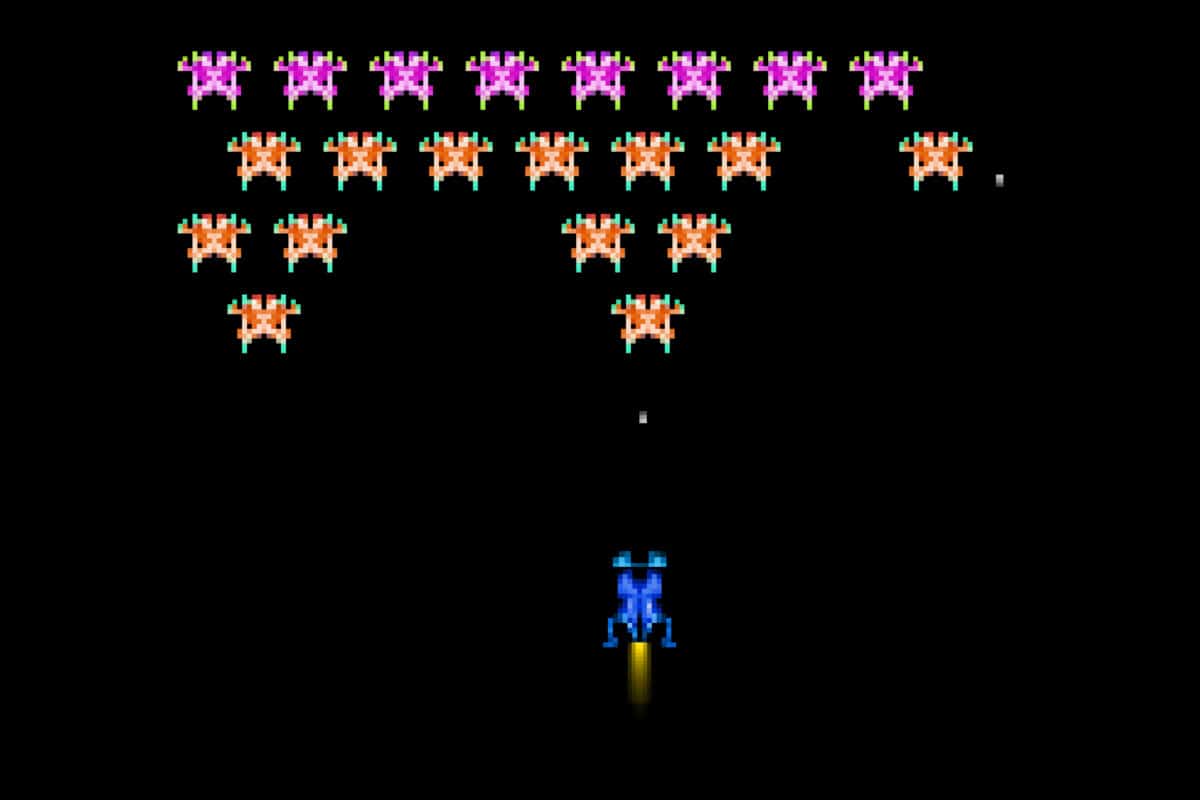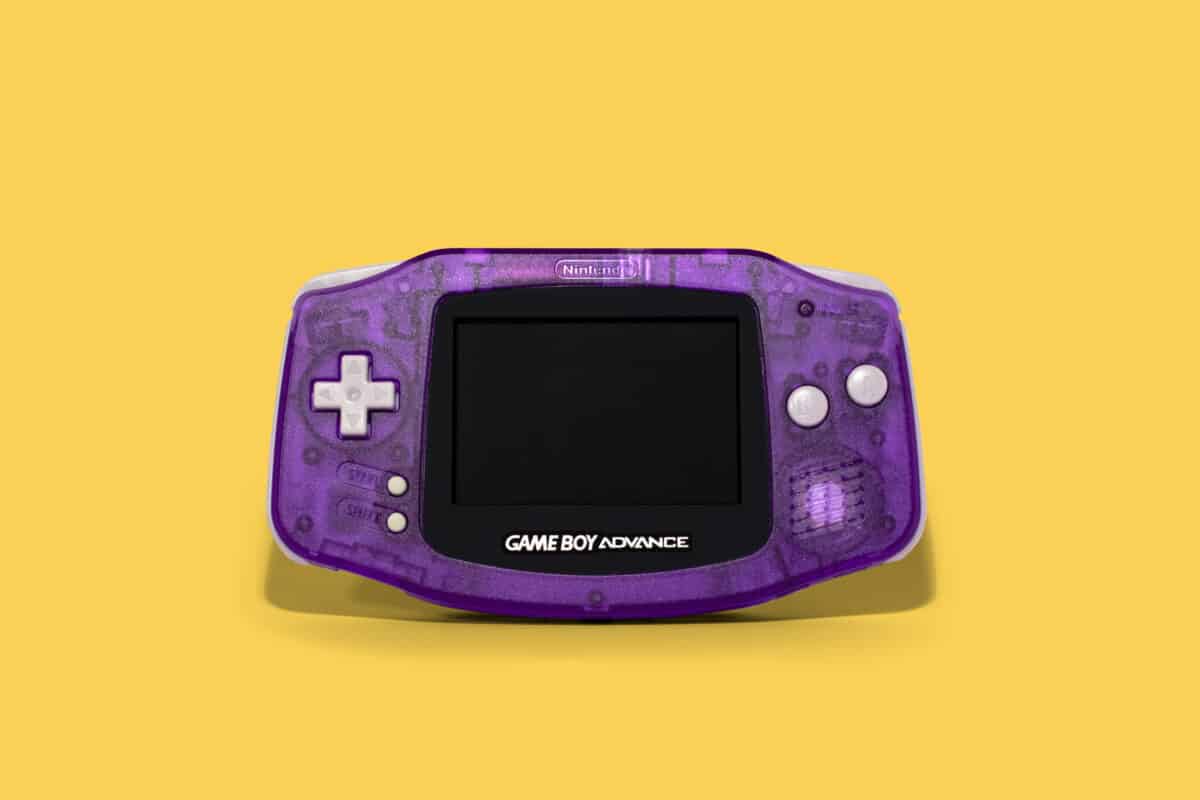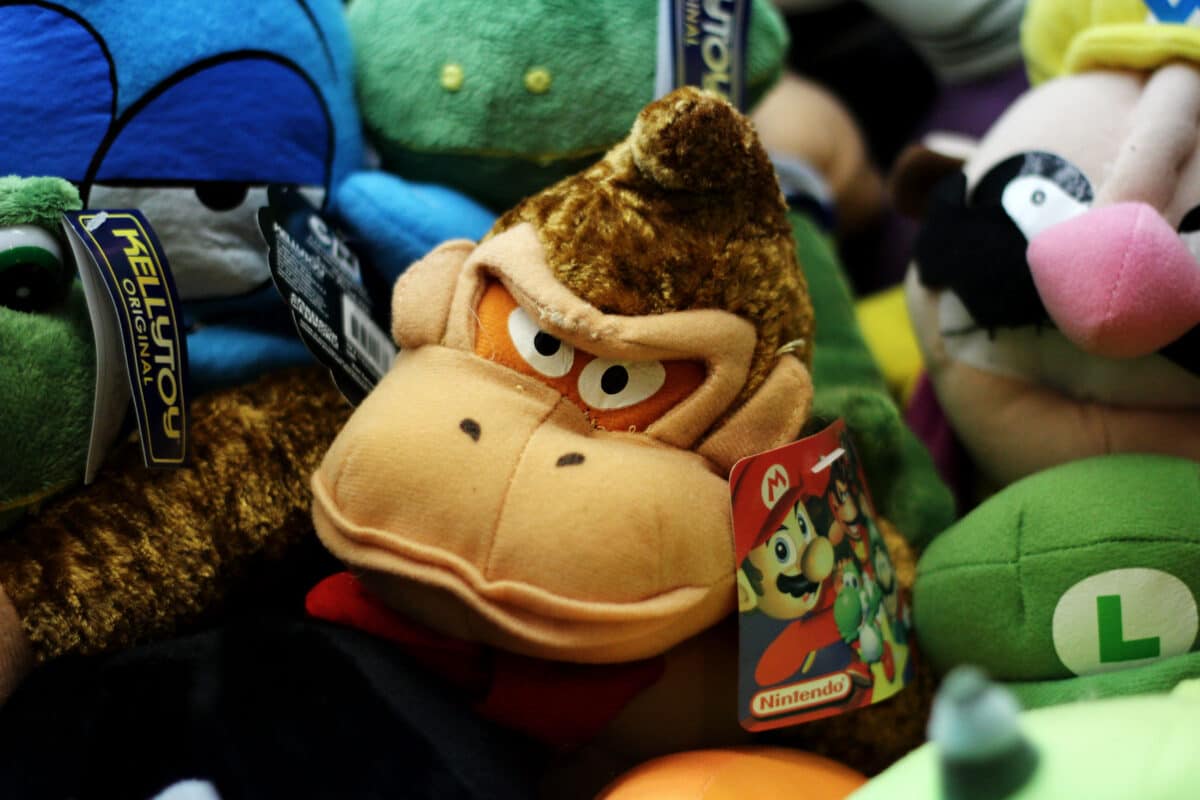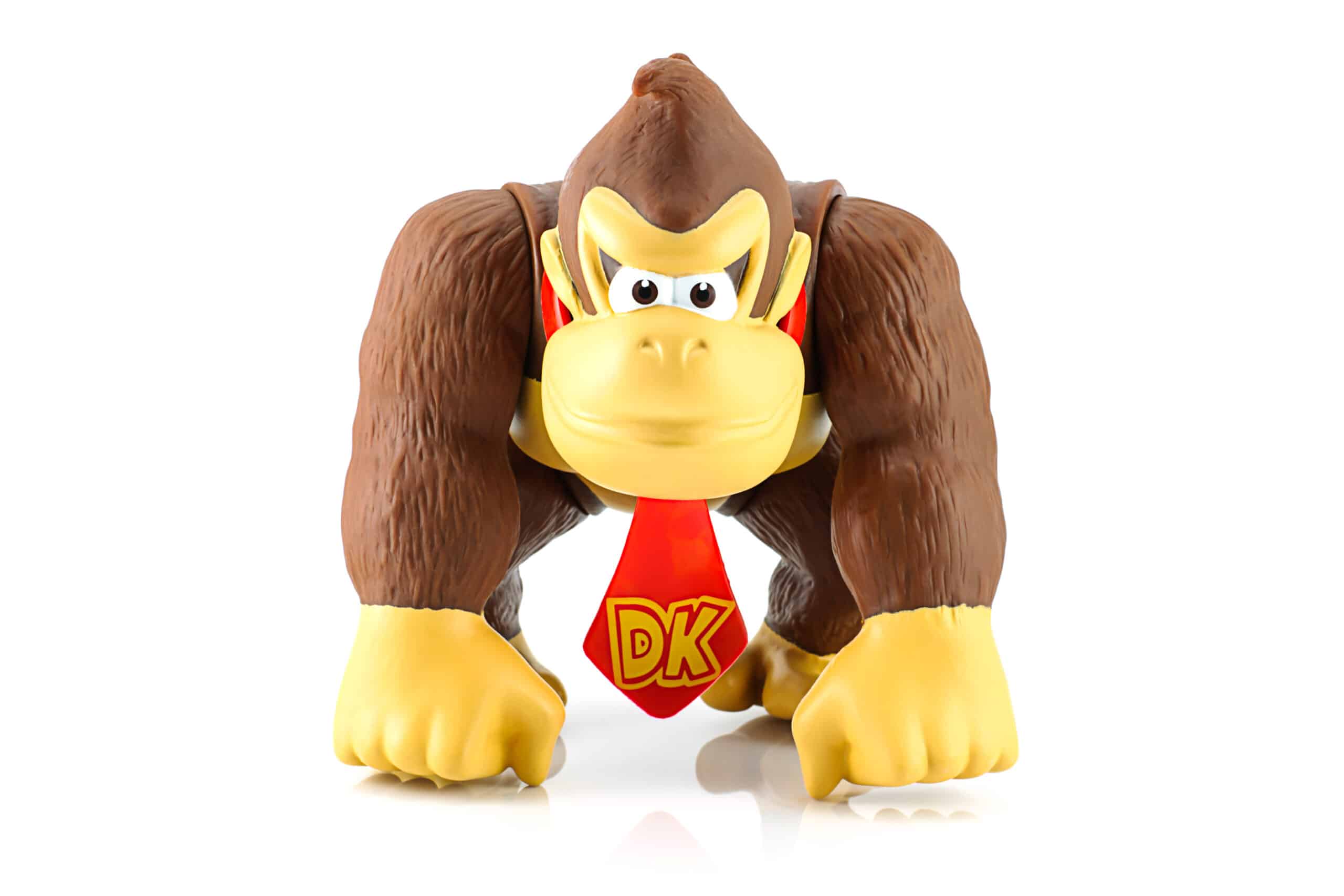Today, Nintendo is one of the most recognizable names in gaming. That is thanks in large part to the world-famous mascot, Mario. Mario may be the face of the company, but there is another character that Nintendo can thank for its establishment in the global gaming picture: Donkey Kong.
Donkey Kong was Nintendo’s first mega-hit, and it allowed the company to gain a foothold in the North American arcade market. The success of Donkey Kong paved the way for Mario and the NES to reach meteoric heights. So, let’s dive in and look at the long and storied history of everyone’s favorite tie-wearing ape.
Quick Facts
- Creator (person)
- Shigeru Miyamoto
- Release Date
- 01/07/1981
- Original price
- $19.99
- Operating System
- Nintendo
- Developed By (company)
- Nintendo
History of Donkey Kong
Donkey Kong has been a fixture on Nintendo consoles and exclusives for decades. You could fill a book with all the games, spin-offs, cross-overs, and cameos DK has made over the years. For the sake of sanity, we are going to narrow it down to his solo career. So, only games that feature DK as the lead need apply.
We are also excluding any appearances outside of video games, so we won’t be mentioning the slightly unsettling late 90s animated show, probably for the best.

Origins
In the early 80s, the arcade market in America was booming and Nintendo wanted in on the action. They had made a fortune with Game & Watch, one of the very first handheld gaming systems, but they were ready to enter the arcade industry. In 1980, they released Radar Scope, an arcade shooter in the vein of Galaga or Space Invaders.
While the cabinet was a huge hit in Nintendo’s native Japan, it fell flat with American audiences. But Nintendo didn’t give up, and they tasked a young engineer with remaking the cabinet into something that would catch on in the States. That engineer’s name was Shigeru Miyamoto and the game he created was Donkey Kong.
Miyamoto took inspiration for the idea from several different sources including Popeye and, of course, King Kong. In fact, the game was originally meant to be a Popeye game. Players would take the role of Popeye to traverse increasingly dangerous levels to save Olive Oyl and defeat Bluto. Luckily for everyone, Nintendo couldn’t secure the rights, and Donkey Kong, Mario (originally Jumpman), and Pauline were created. Can you imagine playing Popeye Country with the SNES?
Donkey Kong Arcade Game
Miyamoto was ambitious in creating the game. He went so far as to write a back story for the characters and created short “cut scenes” for the game. That might not seem like a big deal. Nowadays we have games like Mass Effect or The Last of Us that revolve around stories. At the time, it was revolutionary. Arcade games were very straightforward: there are dots on the screen, shoot them before they get to you. Donkey Kong changed everything.
The cabinet was placed in two bars in Seattle as a test. They quickly became the most popular arcades in both. So much so that the owners requested more cabinets and, oh, did Nintendo reply. In 1981, Nintendo sold more than 60,000 cabinets, sometimes selling up to 4,000 cabinets per month. Over the lifetime of the game, it sold more than 132,000 units, netting Nintendo a total of $280 million. It’s safe to say that Nintendo’s first official foray into the arcade scene was a smash hit.
Games
Donkey Kong’s long and storied history has seen many eras and types of games. We are going to walk through each era and give a broad description of the games therein. There will undoubtedly be games we don’t mention in this rundown, but fear not, we will be adding a list of every game in the DK universe at the end of this article.

The Arcade Era
After the success of Donkey Kong, there was no question that Nintendo would make a follow-up game. The subsequent game was Donkey Kong Jr., released in 1982. The game reversed the roles of the DK and Mario and is the only video game in history to portray Mario as a villain.
You play as the titular DK Jr. as you work your way through hazardous levels to save your dad, the original Donkey Kong. After his exploits in the original game, DK is captured by Mario and imprisoned in a circus cage. The game incorporated new level types as well as an uptick in difficulty. Jr swings between vines, avoids enemies, and navigates projectiles.
This follow-up was a huge success but failed to outsell the original Donkey Kong. It sold around 30,000 units in 1982 and netted the company a healthy profit. After this, Donkey Kong’s arcade era would come to an end, not with a bang, but with a whimper.
Donkey Kong 3 was released in 1983 and fell flat with arcade goers. Some could chalk this up to the arcade “crash” that started in ’83, but the game was also a deviation from what made the first two games great. It got rid of Mario in favor of Stanley the Bugman, who would shoot insecticide at DK. It wasn’t great; the story was convoluted, and the gameplay was more like a shooter than the platformers that had proceeded it. It only sold 5,000 units in its lifetime and closed the arcade era.
Donkey Kong would have an arcade resurgence in 2005 and 2006, but those titles were only released in Japan.
NES Ports
The NES era was dominated by the Mario Bros, with three legendary entries in the Italian plumber’s canon. Donkey Kong, however, was left on the backburner during this time. All three DK arcade titles were ported to the NES, but the only new game was Donkey Kong Jr. Math.
Math was an educational game where you play as DK Jr. Instead of swinging through vines and avoiding enemies, this game challenged players with simple math problems. Correct answers allowed you to progress, wrong answers would eventually lead to lost lives. It was decently well-received as a solid educational game. It also featured the first-ever female version of DK in the two-player mode.

.
The Rare Era
Donkey Kong Country Series
In 1994, developer Rare took the reins of the DK franchise for the first time and revolutionized the character forever. Donkey Kong Country was released in ’94 to rapturous success. It was named Game of the Year in ’94 and sold more than 500,000 copies in the first week, making it the fastest-selling video game of all time at that time.
The game completely reimagined the character and story. Instead of a villainous kidnapper, DK took the role of hero as he battled against the evil King K. Rool. The gameplay was 2D platforming at its very best. It also had a distinct art style that set it apart from many other games of the time.
It established a new era for DK and his colorful band of pals. The original Country run had two more entries, with Donkey Kong Country 2: Diddy Kong Quest and Donkey Kong Country 3: Dixie Kong’s Double Trouble! Both enjoyed positive reviews and healthy sales.
The Country games also originated a fun theory about DK. Donkey Kong Country introduced fans to Cranky Kong, DK’s father. In the accompanying game manual, it is suggested that the modern DK is actually Donkey Kong Jr. and Cranky Kong is the original baddie from the arcade game.
Nintendo has neither confirmed nor denied this, but it makes for a fun theory.
Donkey Kong 64
Hoping to ride the success of Mario 64 and the Rare original game, Banjo-Kazooie, Donkey Kong 64 was released in 1999. The N64 game had much of the DNA that made that era of 3D platformers great. At the time, it garnered critical acclaim and was Nintendo’s top seller for 1999.
The game features 5 protagonists you can switch between. You start the game with Donkey Kong and, during your playthrough, you unlock the other characters. DK is joined by Diddy Kong as well as newcomers, Lanky Kong, Tiny Kong, and Chunky Kong. Like many other 3D platformers of the time, players would explore a series of worlds, collect items to unlock new stages, and face off with bosses. While it remains a strong entry in the DK timeline, some fans have soured on the game over the years.
Many fans complain the game suffered from an oversaturation of things to do. Critics say there were too many collectibles, and the character switching feature made the game overlong and repetitive. Either way, this game keeps the DK series going strong into the early 2000s.
Gamecube and the DK Bongos
This is where the story of DK hits a rough patch. Anyone who had a Gamecube back in the day probably remembers the infamous DK Bongo Controller. Games like Donkey Konga and Donkey Kong Jungle Beat incorporated the unorthodox controller to mixed success.
Donkey Konga
The first outing with the DK Bongo controller was Donkey Konga, a rhythm game that utilized the DK Bongo controller. It was generally well-received and did reasonably well in sales. The inclusion of the Bongo controller was called innovative by several outlets. The game was a serious departure from what fans had come to expect and the controller was not universally liked.
Some fans complained that the controller didn’t do a great job of registering their beats and that it was clunky to use. Luckily, Nintendo made all games that utilized the DK Bongos playable with a regular controller as well.
Donkey Kong Jungle Beat
This new entry also made use of the DK Bongos, but the gameplay was a departure from the traditional Donkey Kong Country game. It was considered a 2.5D game, which means that the levels themselves are 2D side-scrollers, but the environments and characters give the impression that they are 3D. It’s basically 3D models in a 2D space.
The game followed Donkey Kong as he traversed 16 kingdoms as he toppled the kings of each world and took over the jungle. While 16 sounds like a lot, each was only comprised of two platforming levels and one boss fight. The boss fights were praised for their inventiveness, especially with the DK Bongo controllers. The platforming was more suspect.
Each platforming level was briefer than players had come to expect. This made the game’s total length very short compared to the premium price tag. So, while the game was praised for its innovative boss battles and incredible graphics, it received an equal amount of criticism.

Handheld and the Minis Series
In an effort to rekindle the rivalry between Mario and Donkey Kong, Nintendo released Mario vs. Donkey Kong. It returned Mario and DK to their original roles, but the gameplay expanded on the original.
Playing as Mario, gamers tackle platforming levels and puzzles to save Mini-Marios. The game was praised for its fresh take on a classic. It was a hit with fans at the time which kicked off the Mini series in earnest.
There would be a Mario vs. DK Mini game on each handheld console generation, most of them garnering solid reviews. The franchise also noted the return of the original DK character, Pauline. This revival of the character has continued into games like Mario Odyssey, which sees Pauline as Mayor of New Donk City, a play on the history the three characters share.
Donkey Kong Country Returns Era
In 2010, Nintendo brought the DK character back to his roots with Donkey Kong Country Returns. The game was a smash hit with fans and breathed life into the character. Donkey Kong Country Returns was truly a return to form for the series. It reintroduced tight 2D platforming levels and brought back a lot of the familiar faces of the past.
The game was followed by the equally well-received Donkey Kong Country Tropical Freeze. While it was a critical success, the game took a hit in sales. Its predecessor had sold over 130,000 copies in the first month. Tropical Freeze struggled to reach those numbers, clearing 100,000 in just under 3 months.
To date, this is the last new main series DK game that Nintendo has released.
Legacy
Donkey Kong has an enduring legacy as a game and character. You have to wonder what Nintendo would look like today without DK. Would they have made a foothold in the U.S.? Would Mario even be their universally famous mascot? Would we be talking about the quirky little toy company that made the Popeye arcade game in the 80s? No one can say for sure.
The ultimate takeaway is that DK represents what Nintendo is at its core. He is an enduring character that has been reinvented time and time again. Like DK, Nintendo is not afraid to take big swings. They don’t always pan out, and sometimes it is worth going back to basics. But they will always push for new fun experiences, and we are here for it.

Game by Year
As promised, here is every solo DK game in order of the year they were released. This does not include ports or rereleases.
| Year Released | Title | Console |
|---|---|---|
| 1981 | Donkey Kong | Arcade |
| 1982 | Donkey Kong Jr. | Arcade |
| 1983 | Donkey Kong 3 | Arcade |
| 1983 | Donkey Kong Jr. Math | NES |
| 1984 | Donkey Kong Circus | Game & Watch |
| 1984 | Donkey Kong Hockey | Game & Watch |
| 1988 | Donkey Kong Classics | NES |
| 1994 | Donkey Kong Country | SNES |
| 1995 | Donkey Kong Country 2: Diddy Kong’s Quest | SNES |
| 1995 | Donkey Kong Land | Game Boy |
| 1996 | Donkey Kong Country 3: Dixie Kong’s Double Trouble! | SNES |
| 1996 | Donkey Kong Land 2 | Game Boy |
| 1997 | Donkey Kong Land 3 | Game Boy |
| 1997 | Diddy Kong Racing | Nintendo 64 |
| 1999 | Donkey Kong 64 | Nintendo 64 |
| 2000 | Donkey Kong GB: Dinky Kong and Dixie Kong | Game Boy Color |
| 2003 | Donkey Konga | GameCube |
| 2004 | Mario vs. Donkey Kong | Game Boy Advance |
| 2004 | Donkey Konga 2 | GameCube |
| 2004 | Donkey Kong Jungle Beat | GameCube |
| 2005 | Donkey Kong: King of Swing | Game Boy Advance |
| 2005 | Donkey Kong: Jungle Fever | Arcade |
| 2005 | Donkey Konga 3: Tabe-houdail Haru Mogitate 50 Kyoku (Japan Only Release) | GameCube |
| 2006 | Mario vs Donkey Kong 2: March of the Minis | Nintendo DS |
| 2006 | Donkey Kong: Banana Kingdom | Arcade |
| 2007 | Diddy Kong Racing DS | Nintendo DS |
| 2007 | DK: Jungle Climber | Nintendo DS |
| 2007 | Donkey Kong Barrel Blast | Wii |
| 2009 | Mario vs. Donkey Kong: Minis March Again | Nintendo DS |
| 2010 | Mario vs. Donkey Kong: Mini-land Mayhem! | Nintendo DS |
| 2010 | Donkey Kong Country Returns | Wii |
| 2014 | Donkey Kong Country: Tropical Freeze | Wii U |
| 2015 | Mario vs. Donkey Kong: Tipping Stars | Wii U |
| 2018 | Donkey Kong Country: Tropical Freeze | Switch |
Up Next…
- The 7 Absolute Best Nintendo Switch Platformers of All Time: Are you getting a Switch? These are the best platformers you can play!
- The 6 Absolute Best Nintendo Switch Survival Games of All Time: If you’re into survival games – we’re chosen the best ones for your Switch!
- The Top 10 Games from 2019 That We’re Still Playing: These games may be old – but they are just so fun! Check them out!
The image featured at the top of this post is ©Nicescene/Shutterstock.com.








